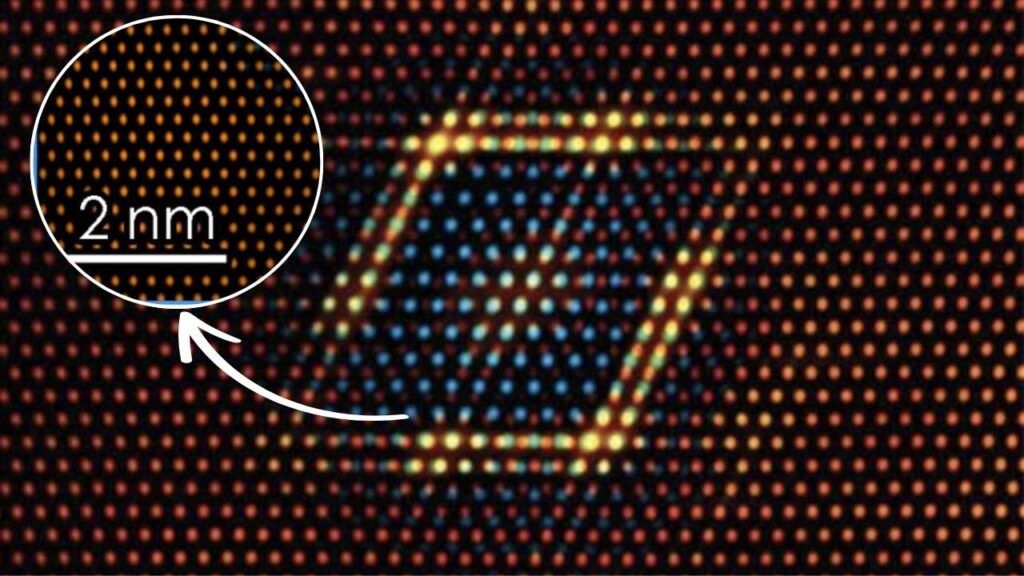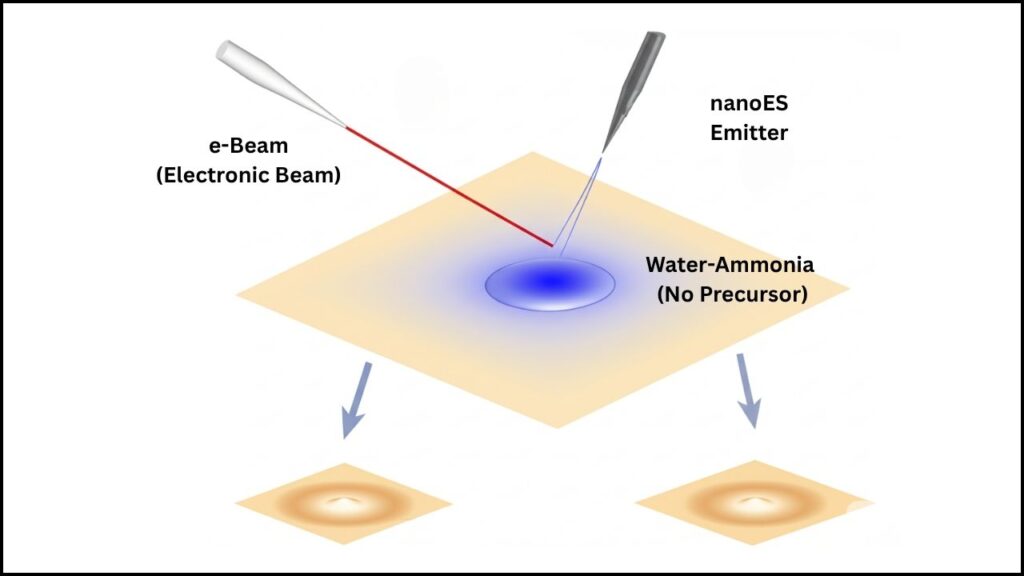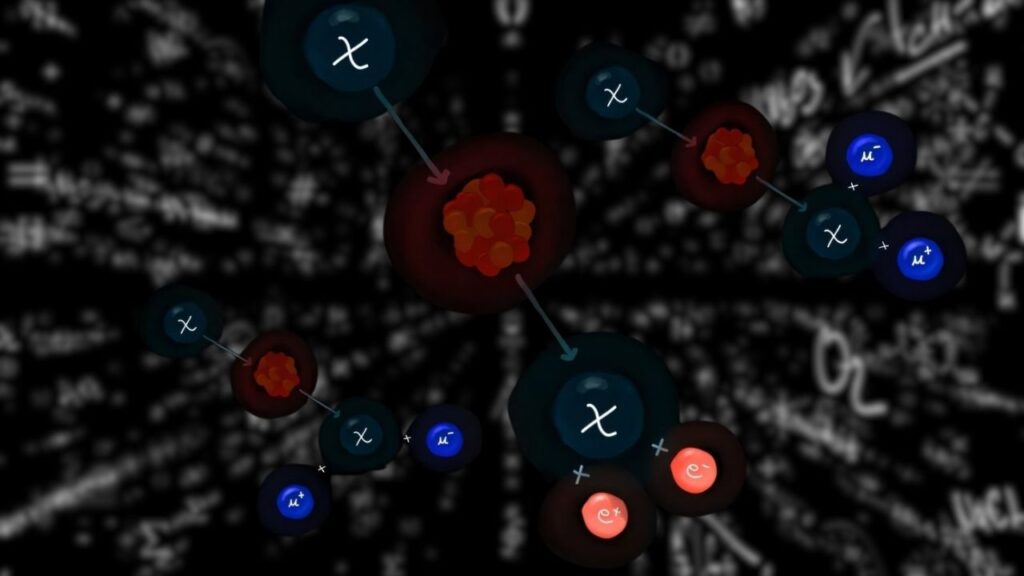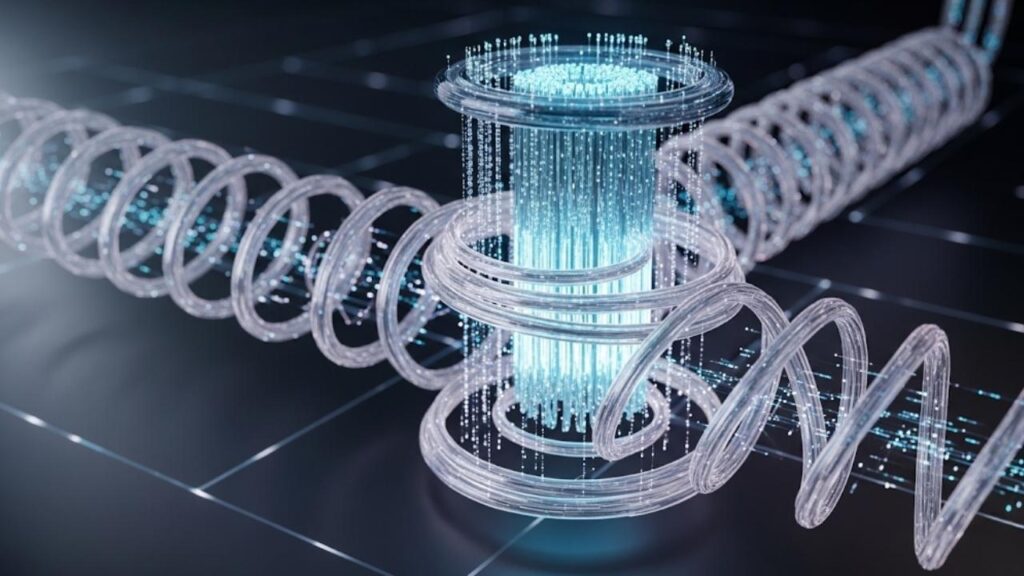Imagine a clock so accurate that it would neither gain nor lose a single second in over 33 billion years—longer than the universe has existed. That’s exactly what scientists at the National Institute of Standards and Technology (NIST) have achieved with their aluminum ion-based atomic clock, which now holds the world record for precision at 19 decimal places. This isn’t just a scientific curiosity; it’s a milestone with deep implications for technology, navigation, physics, and even how we define time itself.

Atomic clocks are already the backbone of modern timekeeping, used in everything from GPS satellites to internet servers. But this new optical atomic clock is a giant leap forward. Its unprecedented accuracy opens new possibilities for scientific discovery and practical innovation, and it’s a testament to decades of patient, meticulous research in quantum physics and engineering.
Table of Contents
Why This Matters: More Than Just Counting Seconds
At first glance, a super-accurate clock might seem like a niche achievement. But precision timekeeping is foundational to modern life. Every time you use GPS to navigate, stream a video, or sync your devices, you’re relying on atomic clocks. The more accurate these clocks are, the better our technology works—and the more we can learn about the universe.
This new aluminum ion clock is not just a little better than its predecessors. It’s 41% more accurate than the previous record-holder, and it’s 2.6 times more stable, meaning its measurements don’t drift over time. These improvements might sound abstract, but they translate into real-world benefits: better navigation, more reliable communications, and new tools for scientists to explore the mysteries of physics.
Aluminum Ion-Based Clock Breaks Record With 19-Decimal Precision
| Feature | Details |
|---|---|
| Precision | 19 decimal places (5.5 × 10⁻¹⁹ fractional frequency uncertainty) |
| Stability | 2.6 times more stable than previous ion clocks |
| Improvement | 41% better accuracy than previous record |
| Measurement Time | Reduced from 3 weeks to 1.5 days to reach 19-decimal precision |
| Technology | Quantum logic spectroscopy with aluminum and magnesium ions |
| Scientific Impact | Advances in physics, navigation, geodesy, and potential redefinition of the second |
The aluminum ion-based atomic clock is more than a scientific record—it’s a window into the future of technology, navigation, and our understanding of the universe. With 19 decimal places of accuracy, it sets a new standard for what’s possible in precision measurement. Whether you’re a student curious about science, a professional in tech or engineering, or just someone who relies on accurate time every day, this breakthrough matters. It shows how far we’ve come—and hints at the discoveries still ahead.
How Does an Aluminum Ion Clock Work?
Let’s break down how this marvel of engineering actually functions. Most atomic clocks today use atoms like cesium or rubidium, which “tick” at microwave frequencies. But optical atomic clocks, like this aluminum ion version, use atoms that oscillate at much higher frequencies—specifically, in the visible light range. This allows for much finer measurements of time.
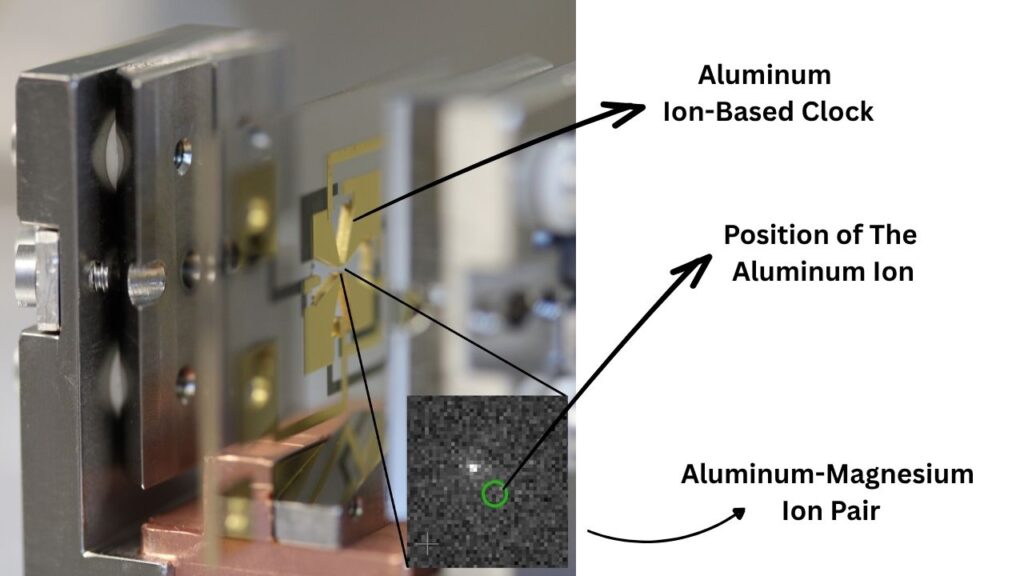
Trapping and Cooling Ions
The heart of the clock is a single aluminum-27 ion, held perfectly still by electric fields in a device called an ion trap. Because aluminum ions are hard to “see” with lasers directly, scientists pair the aluminum ion with a magnesium ion. The magnesium ion acts like a helper: it can be laser-cooled to near absolute zero, which in turn cools the aluminum ion. This ultra-cold environment minimizes jitter and noise, making the clock’s “ticks” incredibly steady.
Quantum Logic and Readout
Here’s where things get really clever. The clock uses a technique called quantum logic spectroscopy. By manipulating the quantum states of both ions, scientists can indirectly measure the aluminum ion’s energy transitions with extreme precision. This method is so sensitive that it can detect changes equivalent to a fraction of a second over billions of years.
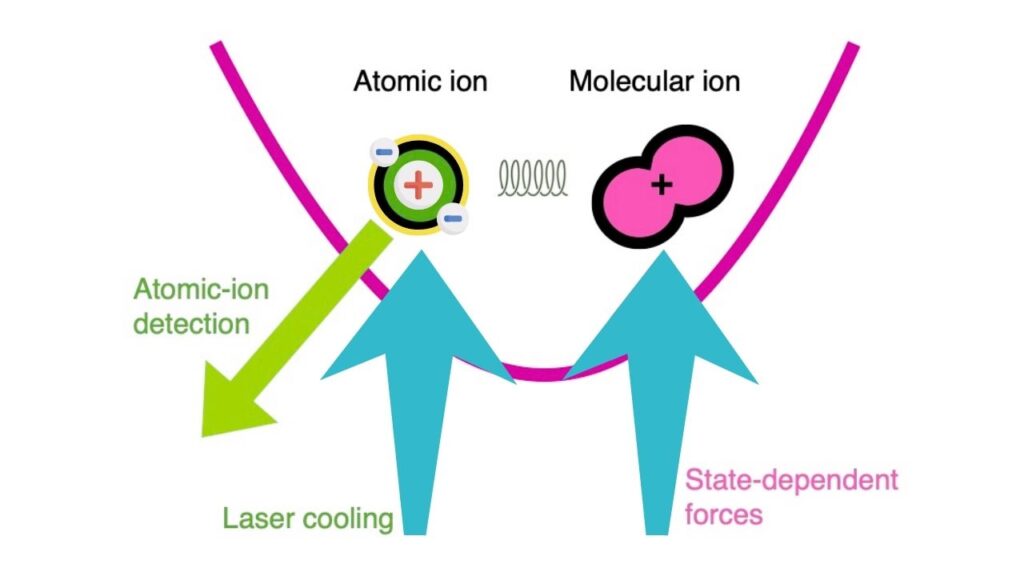
The Magic of the Aluminum Ion
Aluminum was chosen for a reason. The specific energy transition used in this clock is remarkably insensitive to external disturbances like magnetic fields, electric fields, and even heat. This makes the clock’s performance incredibly robust, even in less-than-perfect lab conditions. In contrast, other atomic clocks can be thrown off by tiny changes in their environment, but the aluminum ion clock stays steady.
The Science Behind the Precision
To appreciate just how precise this clock is, let’s put it in perspective. If you had a stopwatch that was off by one second every 100 million years, you’d probably call it accurate. The NIST aluminum ion clock is so precise that it would take over 33 billion years to gain or lose a second. That’s longer than the age of the universe!
This level of accuracy is measured in terms of fractional frequency uncertainty—a mouthful, but it just means how much the clock’s “tick” might vary from perfect. The new record is 5.5 × 10⁻¹⁹, or 0.00000000000000000055. That’s 19 zeros after the decimal point. To reach this level, scientists had to eliminate every possible source of error, from tiny vibrations to minuscule changes in temperature.
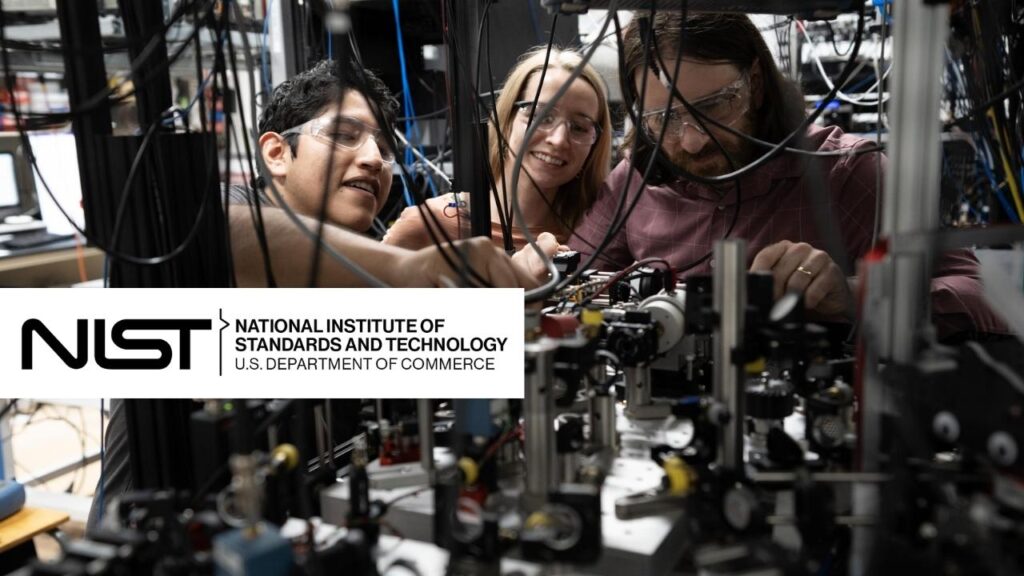
Why Does Stability Matter?
Stability is just as important as accuracy. A stable clock doesn’t just measure time correctly; its measurements are consistent over long periods. The aluminum ion clock’s stability means that it can be used for experiments that require observing tiny changes over hours, days, or even years. This is crucial for both fundamental physics and practical applications like satellite navigation.
Practical Applications: Beyond the Lab
So, what can you do with a clock this precise? The answers might surprise you.
Redefining the Second
The second is the world’s basic unit of time, and it’s currently defined by the vibrations of cesium atoms. But optical atomic clocks like this one are so much more accurate that scientists are seriously considering redefining the second based on optical frequencies. This would be a historic change, affecting everything from science to industry to daily life.
Testing Fundamental Physics
Ultra-precise clocks let physicists test whether the constants of nature—like the speed of light or the strength of gravity—are truly constant, or if they change over time. They can also test Einstein’s theory of relativity with unprecedented accuracy. For example, a clock at a higher altitude (where gravity is slightly weaker) should tick a tiny bit faster than one at sea level. With these new clocks, such differences can be measured with incredible sensitivity.
Earth Science and Geodesy
Believe it or not, super-accurate clocks can help us map the Earth with centimeter precision. Because gravity affects how fast clocks run, a network of optical clocks could detect tiny changes in the Earth’s shape, monitor sea level rise, or even predict earthquakes. This field, called relativistic geodesy, could revolutionize how we understand and protect our planet.
Navigation and Communication
GPS and other global navigation systems rely on atomic clocks. More accurate clocks mean more precise positioning—important for self-driving cars, delivery drones, and even hikers using their smartphones. They also make digital communications more reliable, reducing errors in data transmission and synchronization.
A Step-by-Step Guide to Understanding Atomic Clocks
Let’s walk through how an atomic clock like this one works, step by step:
- Choose the Right Atom:
Scientists pick an atom (like aluminum) with a very stable energy transition that’s easy to measure and hard to disturb. - Trap and Cool the Atom:
The atom is trapped using electric fields and cooled to near absolute zero to minimize movement and noise. - Use a Helper Ion:
If the chosen atom is hard to manipulate directly (like aluminum), a “partner” ion (like magnesium) is used to cool and read out the atom’s state. - Shine a Laser:
A super-stable laser is used to probe the atom’s energy levels. The frequency of this laser is locked to the atom’s natural oscillation. - Count the Ticks:
The clock counts how many times the atom oscillates between energy states. This becomes the “tick” of the clock. - Reduce Errors:
Every possible source of error—heat, vibration, magnetic fields—is minimized or corrected for. - Achieve Record Precision:
With all these steps perfected, the clock reaches unprecedented accuracy and stability.
MicroscopyGPT Uses AI to Describe Atomic Structures in 2D Materials with Unmatched Precision
Researchers Achieve Atomic-Level Control Over Magnetism, Unlocking New Era for Nanoelectronics
FAQs About Aluminum Ion-Based Clock Breaks Record With 19-Decimal Precision
Q: Why do we need clocks this accurate?
A: Super-accurate clocks improve technology (like GPS and the internet), help scientists test the laws of physics, and could even help us detect gravitational waves or dark matter.
Q: How is this different from a regular atomic clock?
A: Most atomic clocks use microwave frequencies. Optical atomic clocks, like this aluminum ion clock, use visible light frequencies, which allow for much finer measurements.
Q: Will this change how we tell time every day?
A: Not directly—your watch or phone won’t suddenly get more accurate. But the technologies that rely on precise timekeeping (like GPS and the internet) will improve.
Q: What’s next for atomic clocks?
A: Scientists are working on even more accurate clocks, and there’s a push to redefine the second based on optical clocks. They’re also exploring portable versions for field use.
Q: Can I buy an atomic clock like this?
A: Not yet! These clocks are huge, expensive, and require expert maintenance. But the technology could eventually trickle down to more practical devices.
The Human Side: Decades of Dedication
Behind this breakthrough are decades of work by teams of physicists, engineers, and technicians. Improving the clock’s accuracy by even a single decimal place can take years of painstaking research. Every part of the system—the lasers, the vacuum chambers, the ion traps—has been refined to near perfection. This achievement is a testament to the power of curiosity, collaboration, and perseverance in science.
